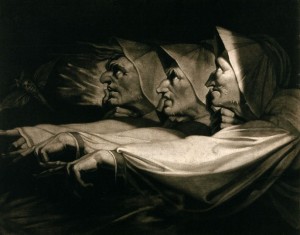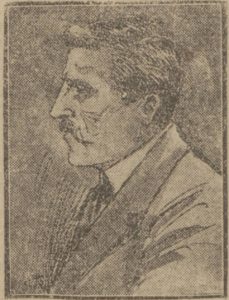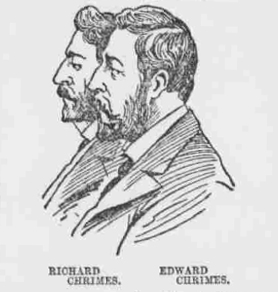 When Nancy Harborough took her sick child to a local celebrity doctor in 1844, she probably didn’t expect to receive advice worthy of Matthew Hopkins two centuries earlier. As it was, the whole sad episode ended up in court, and as the Hull Packet put it:
When Nancy Harborough took her sick child to a local celebrity doctor in 1844, she probably didn’t expect to receive advice worthy of Matthew Hopkins two centuries earlier. As it was, the whole sad episode ended up in court, and as the Hull Packet put it:
The facts of the case speak but little indeed for the boasted ‘march of intellect of the nineteenth century’.
The doctor, Sago Jenkinson, is a shadowy figure who seems to have enjoyed sudden and brief fame in 1840s Hull. He gained a reputation as ‘The French Doctor’, although in a later court case (not the one that concerns us here) he said he was not French and couldn’t even speak the language. He was, he claimed, a Muslim from Constantinople – and this must have gained some credence, for one of the local names for him was ‘Dicky Mahomet’. One anonymous person, however, piped up in court to say that Jenkinson was the son of a woman from Drypool who used to hawk greens in the streets.
An imagined quarrel
Nancy Harborough’s consultation with Jenkinson at the Noah’s Ark in Witham did not result in him sending her home with a dangerous potion. Instead, he (allegedly) told her that the child did not need medicine but would be cured if she did as he suggested. He informed her that she had quarrelled with a neighbour. She did not recall doing anything of the sort so he told her to come back when she remembered.
Jenkinson’s consultations were so packed with people that it was difficult for Mrs Harborough to see him again. But she persevered, and when she next consulted him he asked her to come back in an hour with details of the supposed argument. Presumably preoccupied and frightened about her child’s condition, Mrs Harborough clutched at straws and managed to dredge up a memory about the child bickering with the offspring of one unsuspecting Mrs Sharp.
Drawing blood from a witch
Jenkinson allegedly told Nancy Harborough that Mrs Sharp must have ‘overlooked‘ the child and put an ‘evil hand‘ on it – in other words, ‘witched‘ it. In order to relieve the symptoms, Mrs Harborough must draw blood from the witch with a pin or – better still – a worsted needle.
Nancy Harborough was concerned that if she went ahead, Mrs Sharp might bring the law against her. She did not carry out the proposed assault, but did mention to her neighbours the doctor’s strange advice. When her child sadly died, the neighbours thought something was up. Mrs Sharp, described by the local newspaper as ‘a decent looking woman, about thirty-five‘, found herself ostracised by the community and the subject of unpleasant pranks. She discovered what was going on when a local shopkeeper pointedly said ‘Ah, that poor child is dead; nobody can hurt it now.‘ Mrs Sharp elicited an explanation and went on to instruct her lawyer to threaten Mrs Harborough with prosecution for slander. Mrs Harborough’s best option was to try to bring the ‘doctor’ to court.
Exceedingly dirty in his person
The Hull Packet no doubt wanted to entertain its readers by denigrating the defendant, so its description of Jenkinson must be taken with a pinch of salt, but it is nevertheless quite amusing:
The prisoner, who was exceedingly dirty in his person and linen, and who had on a grey shoddy surtout and a Prussian cap decorated with a rim of gold lace, has an emaciated appearance, and seemed when brought into court to have been indulging in spiritous liquors.
Witchcraft, and such like tomfoolery
While the court did not exactly approve of Jenkinson’s activities, it decided that the case was too silly to continue with. Magistrate Mr Atkinson said it was clear Jenkinson had endeavoured to incite Mrs Harborough to a breach of the peace. He was surprised, however, to discover that anyone still believed in witchcraft these days and ‘blamed the woman for her simplicity, as well as the man for his duplicity.’ Atkinson hoped that the publicity of the case would stop people ‘giving credence to the notions of witchcraft, and such like tomfoolery.’ Sago Jenkinson was discharged and the whole thing blew over.
Nancy Harborough was the only one left suffering – the loss of her child was a tough price to pay for her lack of education and her desperation to find someone who might help her.



One thought on “Sago Jenkinson and the Case of the Witched Child”
Comments are closed.